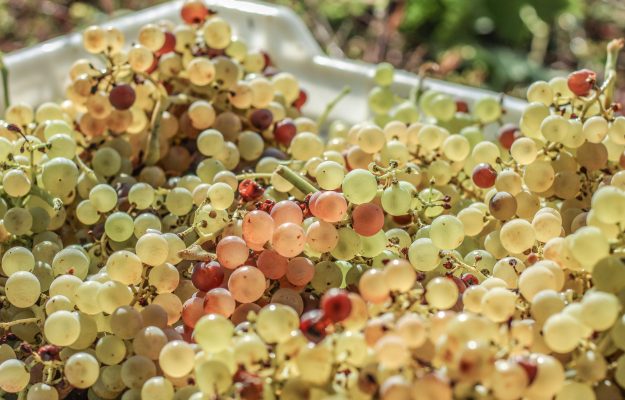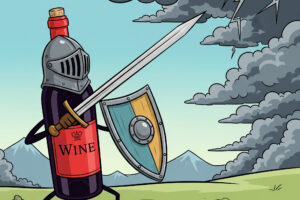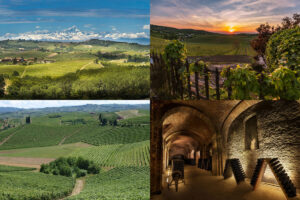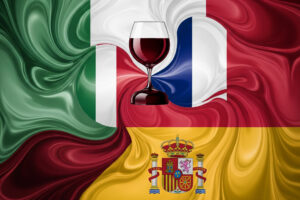It is still very early to start talking about quality estimates for the 2021 harvest. However, it is slowly starting, from the North to the South of Italy, with the first bunches already cut some time ago in Sicily, for example, the harvest underway in Franciacorta, and a few rows of early varieties also harvested in Bolgheri, in Tuscany, as well as in Sardinia, in Puglia, in Umbria, in Friuli-Venezia Giulia and so on, as told by many companies via social networks.
But we are still far from the “big one”, so much so that, after a first phytosanitary survey on July 30th signed by Assoenologi, Unione Italiana Vini and Ismea, the same organizations will present the first real forecasts on the 2021 harvest on Wednesday, September 8th, in streaming, with Ernesto Abbona and Paolo Castelletti, president and secretary general of Unione Italiana Vini, Riccardo Cotarella and Paolo Brogioni, president and director of Assoenologi, Fabio del Bravo (Ismea) and Ignacio Sanchez Recarte, secretary general of Ceev - Comitè Européen des Entreprises Vins. However, from some consortiums of appellations that weigh on the market, some first estimates are beginning to arrive. As from that of Chianti, for example, the largest red denomination in Italy. “A little less, but very good. The 2021 production of Chianti wine will be reduced, due to the spring frost. But the quality of the grapes is excellent. And we expect a wine that can enter the list of the best vintages”, explains the president of the Consorzio Vino Chianti, Giovanni Busi. “After the frost - he explains - the first estimates indicated a reduction in the production of 30-40%. Luckily, plants have reacted well and, in the end, the actual data speaks of a decrease but not so important. In short, the damage is less than we thought. We can breathe a small sigh of relief. But we can’t celebrate yet. The next few weeks will be decisive, especially from a climatic point of view. We must hope that the rains will start, because a period of persistent drought would send the vines to suffer, with negative effects on the quantity. We must therefore hope that the season will follow its natural evolution. 2021 will have to be a restarting year for the wine business as well. Let’s keep our fingers crossed, trusting in a normal passage from summer to autumn”. Waiting for the 2021 vintage, for Chianti wine good news arrive on the sales front: in June they grew by 15% compared to the same month of 2020. “For the 2021 vintage - explains Busi - we have decided to reduce yields by 15% in order to keep production and the market in balance. Fortunately, the market is recovering and the product in stock is there, so with this decision, we guarantee a greater economic return for the production phase. The objective is to consolidate growth in order to guarantee a marginality to the production phase that was not there before”.
Less quantity but good quality is also, in short, the forecast in the land of Prosecco Doc, the largest sparkling wine denomination of Italy. As Andrea Battistella of the Prosecco Doc Consortium explained a few days ago to “Veneto Agricoltura” (which will present the harvest forecasts of the Veneto Region on August 31), “the grapes of the Prosecco Doc area, both in Veneto and Friuli, are in the full veraison phase; for the varieties destined for blending, such as Pinot and Chardonnay, veraison is at an advanced stage. It is important to remember - continues Battistella - that also this year our viticulturists have demonstrated all their skills and professionalism, facing in the best way a very complicated campaign, which started with April frosts, continued with the strong hailstorms which affected some areas and with the alternation of dry and rainy periods”. As of today, the sanitary conditions of the grapes in the large Prosecco DOC area is absolutely satisfactory. The operators have been able to contain the main vine diseases, even if - as pointed out by the technicians of the Consortium - this year, as in 2020, some critical points have reappeared which worry the operators, namely the esca disease and even more the flavescence dorée. “From the point of view of quantity - concludes Battistella - this year’s yields are expected to be lower than the maximums indicated in the specifications. And it is precisely for this reason that, having consulted the relevant offices of the Veneto Region, Friuli-Venezia Giulia Region and the Business Organizations, the appropriate measures will be activated (temporary drawing and storage) to cope with the shortage of grapes for Prosecco Doc and consequently meet the demand of the markets in the coming months”. As far as the quality of grapes destined to become Prosecco 2021 is concerned, operators underline that it is still early to make proclamations, as everything will be decided during the long and delicate ripening phase, but the assumptions are good, in particular for the areas that remained unscathed by hailstorms.
Remaining in Veneto, it is still far away, at least one month, but the harvest 2021 in Soave, one of the most important white wine territories, is promising. As explained by the Consortium, led by Sandro Gini, “the data of the first samples give more than satisfactory results. A very cool and rainy spring has slowed down the first phenological phases of the vine and gave an important contribution of water. During summertime, the alternation of hot weather and not torrential rains did not create drought and kept acidity high. A vintage which is therefore proving to be of high quality, especially in the hilly areas. In order to maintain the productive balance and to reach the objective of increasing the value of the bottled wine, the assembly of the members of the Soave Consortium has prudently chosen to decrease the yields for the 2021 vintage, passing from 150 quintals/hectare for the Doc zone to 130 quintals/hectare (-13%) and from 140 quintals/hectare to 130 quintals/hectare (-7%) for the Classica and Colli Scaligeri zones. Derogations to this decision will be given to companies that in the last two years have not loaded Soave beyond the limit provided without exceeding it, while for certified organic companies, the limit remains at 140 quintals/hectare, to give a strong signal in favor of sustainability in the vineyard”. A decision taken to ensure on the one hand the income of farms and on the other hand the maintenance of the price system. “A shared decision, made by listening to all parties - says the President of the Consortium Sandro Gini - the current year is showing signs of recovery, but there are still many uncertainties and this requires acting with prudence. The choice, therefore, in addition to ensuring the proper contribution of Soave on the market, will also ensure excellent quality thanks to a particularly favorable year”.
For the great reds, obviously, the harvest is still far away. And if there are those who have already announced the reduction of yields, such as the Consorzio del Brunello di Montalcino, which has decided to leave unchanged the maximum quantity of grapes that can be claimed as Brunello di Montalcino Docg wine for the first hectare of vineyard, lowering it from 80 to 70 quintals per hectare for the following ones, there are those who are counting on the return to the promotion in the great international markets. Like that of the United Kingdom, which, on September 15, will see the Consorzio di Barolo Barbaresco Alba Langhe e Dogliani, led by Matteo Ascheri, as the protagonist of the “Vintage Lunch”, conducted by Walter Speller and Master of Wine Jane Hunt at Church House Westminster in London, dedicated to the trade, with tastings of over 140 labels of Barolo 2017, Barbaresco 2018, and with 2018, 2019 and 2020 vintages of Langhe Nebbiolo and Nebbiolo d’Alba.
But, in the meantime, there are also those who, with the grapes still far from being ready for harvesting, are looking to the future, sending a clear message to the supply chain, as did the Consorzio per la tutela dei Vini della Valpolicella, today, at the meeting between representatives of the Consortium, companies and business associations, for a joint assessment of the values of the grapes, that is of the raw material, in view of the imminent harvest. Emphasizing once again how even in a rich territory, where wine, Amarone in the lead, moves every year a turnover of 600 million euros, we must reason together, with a view to increasing quality and remuneration, rather than further quantitative growth. “Today, more than ever, the confrontation on production and market dynamics is fundamental - explains Christian Marchesini, president of the Consorzio dei Vini della Valpolicella - and, in fact, together with the companies and the supply chain associations, we must push more and more on quality and positioning in order to win the war against speculation, starting with the values of the grapes. Only in this way we will be able to support the Valpolicella system and, in general, the wine made in Italy. We want to give a positive signal, because the bottling figures are good for all types of wine, and all the components of the supply chain are willing to support an increase in the value of the grapes”, Marchesini explained to WineNews. Rewarding the product of excellence, as in the case of Amarone della Valpolicella Docg, in terms of price and proposing different products able to cover many market segments, is the priority, explains the Consortium. For Valpolicella and for many wine territories of Italy.
Copyright © 2000/2025
Contatti: info@winenews.it
Seguici anche su Twitter: @WineNewsIt
Seguici anche su Facebook: @winenewsit
Questo articolo è tratto dall'archivio di WineNews - Tutti i diritti riservati - Copyright © 2000/2025








































































































































































































